Insights from the URGE network: thematic report
Edited on
21 May 2025Insights from the URGE Network and experiences from the City of Prato: Governance model and improvement of knowledge as drivers to foster circular economy particularly in the building sector
By Dr. Eleni Feleki, Lead Expert of the URGE Action Planning Network
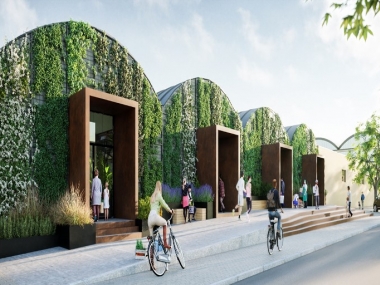
Background
Cities play a central role in the development of a circular economy. They act as test-beds of potential measures, by which transition can be achieved. Urban transition to a circular economy requires political will, commitment, sound governance, clear paths to follow and good knowledge. At the same time, cities are struggling between being trying to be the drivers of change and the battleground for many societal challenges of the 21st century. This has also been emphasised in the United Nations agreements of the New Urban Agenda and the 2030 Agenda on Sustainable Development and is now more relevant than ever due to the effects of the Covid-19 pandemic crisis.
 The European Union's Urban Agenda has been set since spring 2016 with the Pact of Amsterdam that identified the key operational intervention areas. It was made clear that change should start from:
The European Union's Urban Agenda has been set since spring 2016 with the Pact of Amsterdam that identified the key operational intervention areas. It was made clear that change should start from:
1) Improvement of legislation (Better Regulation)
2) Sharing of best practices and improving cooperation (Better Knowledge)
3) Strengthening access and optimal use of funds (Better Funding)
This Urban Agenda is composed of 12 priority themes essential to the transformation of urban areas, each one of which dealt within a dedicated EU Partnership, bringing together different entities, aiming to implement the Urban Agenda. One of these partnerships is the Partnership on Circular Economy.
The EU Partnership on Circular Economy
The EU Partnership on Circular Economy focuses on:
- Circular consumption
- Urban resource management
- Circular business enablers and drivers
- Governance
Governance, especially at the local level, is a cross-cutting topic which is critical to put forward all the changes needed at operational level that can really boost circular economy. Policy gaps, lack of an integrated vision due to insufficient leadership and coordination, poor political commitment are topics linked to governance that have been also raised in the recent report of the OECD (2020).
Governance and enhancement of knowledge have been identified as important lines of intervention by the URGE partnership. This Thematic Report that follows the transnational exchange of the URGE partner cities on these topics, analyses the barriers and potential solutions discussed among the partnership and depicts a holistic governance model coming specifically by the City of Prato.
Barriers that hamper the development of circular economy at the urban level
Governance
 An issue of great importance that has been raised by the URGE partnership, is the overlapping of policies and strategies, due to the lack of an integrated approach. This haumpers the ability to introduce a systemic approach and leads to the implementation of fragmented projects, overlapping outputs and disruption of knowledge. Apart from silos between different municipality departments, there is also too much focus on the environmental impacts of interventions, leaving socio-economic aspects aside. Nature-based solutions, urban health and citizens’ well-being, security, growth of jobs, resource efficiency, air quality, circular economy, should be given special attention holistically, covering an integrated local urban agenda that will serve a unique strategic vision.
An issue of great importance that has been raised by the URGE partnership, is the overlapping of policies and strategies, due to the lack of an integrated approach. This haumpers the ability to introduce a systemic approach and leads to the implementation of fragmented projects, overlapping outputs and disruption of knowledge. Apart from silos between different municipality departments, there is also too much focus on the environmental impacts of interventions, leaving socio-economic aspects aside. Nature-based solutions, urban health and citizens’ well-being, security, growth of jobs, resource efficiency, air quality, circular economy, should be given special attention holistically, covering an integrated local urban agenda that will serve a unique strategic vision.
In addition, the mandate in terms of who is responsible for the design and implementation of the circular economy strategy amongst the city administration, is not clear. And this usually leads to fragmentation of dialogues, decisions, visions, strategies, policies and plans produced by the same organisation. As result, weak accountability, loss of funds and under-exploitation of human capabilities, may encounter.
 The introduction of a realistic vision and strategy for the med and the long-term is necessary in order avoid the risk of delivering isolated circular economy actions. Fragmented actions may be combatting, in many cases, with other municipality initiatives instead of complementing them. Thus the overall long-term vision is often missing. The key success factor is the introduction of a realistic, effective and integrated umbrella-strategy, supported by a SMART urban agenda. This should be accompanied by the reassurance that all entities, coming different departments, backgrounds, are involved. If so, the distribution of roles and responsibilities, maximization of synergies and funds’ raising process are much more effective and complementary, serving one ultimate goal.
The introduction of a realistic vision and strategy for the med and the long-term is necessary in order avoid the risk of delivering isolated circular economy actions. Fragmented actions may be combatting, in many cases, with other municipality initiatives instead of complementing them. Thus the overall long-term vision is often missing. The key success factor is the introduction of a realistic, effective and integrated umbrella-strategy, supported by a SMART urban agenda. This should be accompanied by the reassurance that all entities, coming different departments, backgrounds, are involved. If so, the distribution of roles and responsibilities, maximization of synergies and funds’ raising process are much more effective and complementary, serving one ultimate goal.
Moreover, clarifying a focal point (office/department), responsible for the introduction of the umbrella-strategy and of the urban agenda, is of great importance. In many cases, roles and responsibilities in setting and implementing visions, strategies, policies, plans and actions for circular economy are allocated for example to waste management, environmental planning, European funds department, failing to achieve a holistic, multi-dimensional approach. Thus, numerous different departments might be implementing circular economy activities or projects, while others might be dealing for example with urban health matters, mobility or even homelessness. Coordination should be achieved, under the wings of an inspired leader of a department that will be responsible for the governance and management of all issues that touch urban sustainability and circular economy.
Awareness and capacity gaps
 Undoubtably, acting in line with the circular economy principles calls for significant transition that needs to be initiated by people. As any human-centered transformation, time and patience are needed. A good starting point is to seek for consensus; for a common understanding on what circular economy is. This is missing up to date at least at the local level.
Undoubtably, acting in line with the circular economy principles calls for significant transition that needs to be initiated by people. As any human-centered transformation, time and patience are needed. A good starting point is to seek for consensus; for a common understanding on what circular economy is. This is missing up to date at least at the local level.
Cultural barriers that might be prevalent within the community prevent the necessary behavioural shifts required for a transition to the circular economy. Circular-economy-related activities, might be barely conceived as valuable options to reduce consumption and therefore waste generation, due to lack of knowledge.
Most commonly, the lack of knowledge and understanding of the concept are relevant for all the players of the chain: from decision makers to citizens and from engineers to construction workers. Poor awareness of the benefits of circular economy and of good practices, forestalls cities from unlocking the potential.


 In terms of capacities, municipalities fail to fully meet the needs of the circular economy transition, due to underdeveloped human resources. There is a need for well-informed technicians with specific knowledge of the circular economy, not only in the case of people involved in drafting strategies and plans at local level, but, even most importantly, in the case of technical blue-collar workers that are needed for circular construction. While informative workshops and events may often remain generic, actors from business sector, could benefit from more specific and practical input, including through peer-to-peer learning. URGE partners have exchanged deeply on ideas to raise stakeholders’ engagement, raise awareness and involvement of decision-makers. Their views on how to engage stakeholders, raise awareness and involve decision-makers are depicted in the following infographics.
In terms of capacities, municipalities fail to fully meet the needs of the circular economy transition, due to underdeveloped human resources. There is a need for well-informed technicians with specific knowledge of the circular economy, not only in the case of people involved in drafting strategies and plans at local level, but, even most importantly, in the case of technical blue-collar workers that are needed for circular construction. While informative workshops and events may often remain generic, actors from business sector, could benefit from more specific and practical input, including through peer-to-peer learning. URGE partners have exchanged deeply on ideas to raise stakeholders’ engagement, raise awareness and involvement of decision-makers. Their views on how to engage stakeholders, raise awareness and involve decision-makers are depicted in the following infographics.
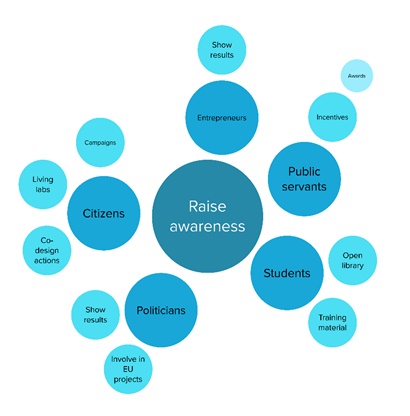
Infographic 1: Awareness raising (Source: Eleni Feleki)

Infographic 2: Decision-makers (Source: Eleni Feleki)
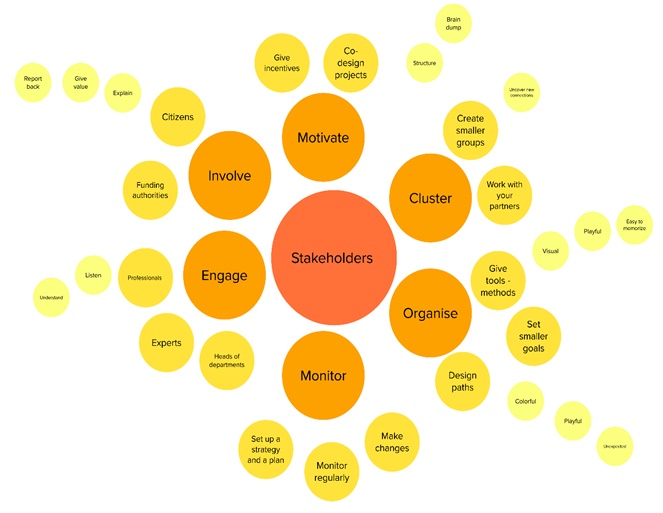
Infographic 3: Stakeholders engagement (Source: Eleni Feleki)
An effective circular economy governance model: Experience from Prato
In Prato, the green transition is at the heart of the municipal administration's program in line with the new climate goal of reducing emissions by at least 55% by 2030. This will be implemented in line with the first European climate law that the Council and Parliament Plan will adopt, together with NextGenerationEU and the 2021-2027 Budget. The Plan will include adequate measures to achieve the European objectives regarding renewables, energy efficiency, pollution control, sustainable mobility, protection of biodiversity, support for the transition to sustainable food systems and the circular economy, without leaving any citizen behind.
This integrated planning approach translates into the administrative mandate in the coordination between the Structural Plan, the Sustainable Energy Action Plan and the Climate - SECAP, Urban Forestry Action Plan, Prato Urban Jungle, PUMS, Prato Circular City and Smart City Plan, all developed in line with the Single Programming Document - DUP, which inserts Prato's policies into the Sustainable Development
More specifically, Prato has promoted a general vision on environmental issues that has configured the Prato Green Deal 2050, in the logic of promoting healthy lifestyles, improving people's physical health, their relationships and the ability to take care of the quality of public places. As part of this overall strategy, a series of steps have been undertaken and a variety of programs have been and still are developed, which are presented below.
The achievements of Prato that are produced through longtime hard, collaborative efforts have Cultivated the City’s participation in the EU Partnership on Circular Economy, coordinating several working groups: water reuse; urban reuse management; Pay-As-You-Throw (PAYT) system. The outputs produced by Prato in this frame are: a position paper for a legislative proposal on minimum requirements for reused water for irrigation and groundwater; Pay-As-You-Throw tool; Handbook on sustainable and circular re-use of spaces and buildings.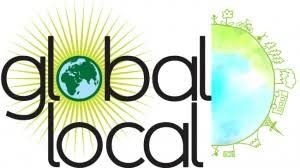
A series of decisions and actions led Prato to be a model for governance of circular economy
The success of Prato and its recognition at EU level among the pioneers in circular economy, lays upon the early introduction of a holistic governance model, starting with the introduction of a solid local strategy, respecting the Sustainable Development Goals 2030. Prato’s local strategy is focused on the areas of: environmental transition; digital transition; circular transition and support; social inclusion.
With regards to circular transition, the theme has historically been relevant for Prato, since reuse has been the basis of the development of the textile district, with the creation of carded wool, the first recycled spinning. 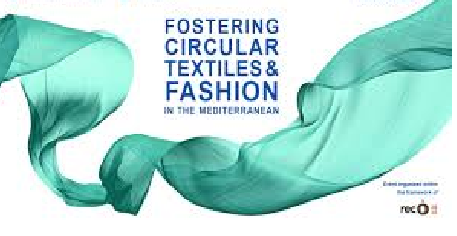 Since 1980, a centralised system for the purification of civil and industrial waste water has been created, thanks to public-private investments. Today, the theme of the circular economy remains extremely relevant for Prato. On both the economic and urban development side, circularity has become the watchword for strategy of the city.
Since 1980, a centralised system for the purification of civil and industrial waste water has been created, thanks to public-private investments. Today, the theme of the circular economy remains extremely relevant for Prato. On both the economic and urban development side, circularity has become the watchword for strategy of the city.
Prato’s local strategy is further unfolded to serve the city, through an integrated, local Urban Agenda Prato. This leads to the next cornerstone for the city’s success story: the translation of its strategy into a holistic urban agenda, which embraces all aspects of sustainability and is managed centrally by one specific Department, led by an engaged deputy-Mayor of urban planning, environment and circular economy.
But still, success in Prato does not lay on a one-man show, or one-department show uniquely.
Prato gives a lot of credits on collaboration, co-design and co-creation. A memorandum of understanding titled: "Circular Cities", fosters the collaboration between the Ministry and three Cities, including Prato. The memorandum promotes concrete activities that are transversal to all territories.
The memorandum is further supported locally through the ‘’Prato Circular City Project’’. Several working groups discuss about methods to foster circular activities including: product and service design; raw material procurement, production and distribution models; more efficient marketing; extension of the useful life of the products and models of reuse; sustainable consumption models and sharing economy activities; recycling of resources from waste. Such a collaboration enables the exchange of information regarding funds’ raising, helps to avoid overlapping initiatives, cultivates the sense of togetherness, helps to break silos and at the end, supports the good monitoring and achievement of goals.
The URGE project is already embedded in Prato Circular City project’s activities: the Integrated Action Planning process has been indicated as one of the tasks of the Prato Circular City project.
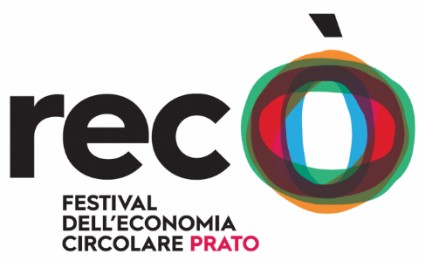 Having set the local strategy, the local agenda and the model for collaborative exchange on realistic and feasible actions, Prato puts forward concrete projects. Prato participates in numerous EU, national, regional clusters and initiatives, securing to a great extent the funding of projects. Examples of ongoing projects, are presented in the following section, respecting the strategy and the urban agenda of the city.
Having set the local strategy, the local agenda and the model for collaborative exchange on realistic and feasible actions, Prato puts forward concrete projects. Prato participates in numerous EU, national, regional clusters and initiatives, securing to a great extent the funding of projects. Examples of ongoing projects, are presented in the following section, respecting the strategy and the urban agenda of the city.
Last but not least, Prato communicates effectively the outputs of the projects. For example, the Recò circular economy festival aims to address best practices in the field of sustainability and renewal, through talks, concerts, theatre shows and guided tours, including family events and performances in the city’s industrial districts. The festival is organised by the Region of Tuscany and Toscana Promozione, in collaboration with the Municipality of Prato.
A governance model cannot be implemented without capable human resources. A limited number of trained staff available at local government level to perform municipal functions and the difficulties in attracting competent staff, usually add constraints in the transformation process. Prato acknowledged from the early beginning the need to build capacities and skills, seek for external support and raise awareness on the issue of circularity as a key success factor. Synergies have been made with the ARCO team, part of the University of Florence, that supports the transformation of the city. There are several training packages targeting public officers, entrepreneurs, employees in the private sector developed to raise awareness and knowledge on circularity:
1. Handbook on urban regeneration
2. Webinars organized by the Chamber of Commerce of Prato on circular economy http://www.po.camcom.it/news/eventi/2020/20201130-webinar-economia-circolare.php; https://www.youtube.com/watch?v=WvfUTR502yQ
3. University syllabus of the "sustainability of production chains" course
A quick overview of on-going projects in Prato
There are several projects that are being implemented in the frame of the urban agenda in Prato, all of them aiming to a more sustainable urban environment, putting forward health, well-being, growth and jobs. Through these projects, Prato tells us its story not only in narrative, but in a realistic way.

Figure 1: Macrolotto 0 (Source: Valerio Barberis)
The "PIU’ PRATO" is an urban innovation project of more than 8 million Euros. The project aims to redevelop a part of Prato called Macrolotto 0. The program of interventions in this area is configured as a virtuous example of a municipal strategic action that positively affects a peripheral area, defining its new identity and improving its attractiveness. Despite the relatively central location, the zone has the characteristics of a peripheral area: buildings’ degradation, lack of spaces for public use, under-allocation of services for the people, blind roads and other physical barriers. The Macrolotto 0 is one of Europe's major urban areas that houses families of Chinese migrant workers.
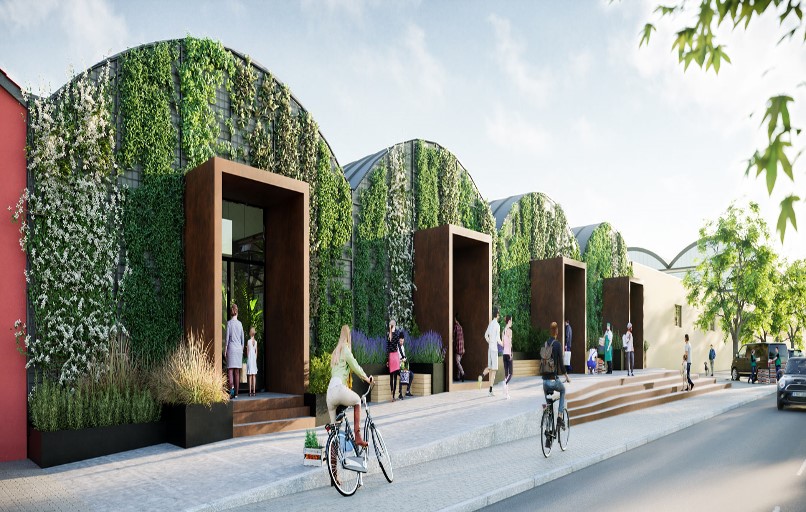
Figure 2: Macrolotto 0 (Source: Valerio Barberis)
More analytically, the regeneration project aims to make the area more liveable, attractive, socially and economically lively, thanks to a series of actions that aim to give value to public space. The actions are designed to recover abandoned buildings, construct green spaces, promote sustainable mobility, provide a media library and co-working spaces. In general, the area will be a meeting place and hub of social activities, serving the neighborhood and the city as a whole. Part of the buildings will be retained. The project includes the redevelopment of a former factory, with the creation of spaces dedicated to social and commercial activities: a metropolitan market, workshops for training courses, House of the Associations, health information office for foreign women and a cultural intermediation office.
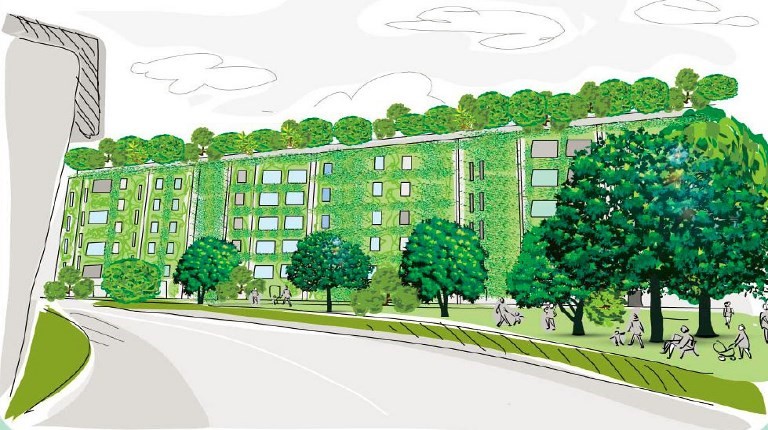
Figure 3: Prato urban jungle (Source: Valerio Barberis)
The Prato urban jungle project, aims to re-naturalise neighborhoods, in a sustainable and socially inclusive way through the development of green areas. These urban areas with high housing and construction density will be redesigned using a green approach. The project promotes a new strategic urban planning approach with a strong co-design and stakeholder engagement focus that will support the most inclusive urban green development in the city. Through this project, it is intended to achieve 1) the regeneration of disused, under-utilised or declining urban areas and 2) the creation of green hubs in the community, high density green islands and structures/areas for multiple uses.
Figure 4: Pacchiani and Bastione delle Forche (Source: Valerio Barberis)
PRIUS project aims to re-qualify an area of 1.25 square kilometers near the historic center, subjected to marginalisation and social degradation. The renovation of Palazzo Pacchiani and the restoration of Bastione delle Forche as well as the transfer of Municipality Offices in the Palazzo are among the interventions. The project has also a social character, due to the restoration of the night shelter for homeless people. Sustainable mobility paths, improvement of urban furniture and leisure activities conclude the transformation of this historic area. The next step of the municipal administration in Prato is to promote an updated governance model of the city, through the creation of a management entity. The aim of this entity will be to map the open spaces and disused buildings and develop indicators with a specific reusability coefficient, making the match between various subjects and transform free spaces into new studios, start-ups, housing, laboratories, residences, etc.
Misericordia e Dolce: Sustainable dismantling of Prato’s old hospital
The old hospital of Prato, "Misericordia e Dolce", was abandoned in 2014. It operated in a vast complex of ancient buildings, constructed and modified from the 13th until the late 19th century. Since the early sixties a large modern building was added, which occupied the large area of the old holding of the Hospital. The addition of a surface of 43,000 square meters destroyed a green lung of almost 4 hectares and caused a serious wound to the urban fabric of the city, tolerated only for the health facility the mighty estate gave answer.

Figure 5: Misericordia e Dolce (Source: Valerio Barberis)
In 2002, the Region of Tuscany has approved the "New Hospital" project for Prato, which finally opened in 2013. The decision to move the hospital laid upon logistic and technical reasons. The City Council immediately took into consideration the possibility of regaining the area of the old hospital to redevelop it and give it back to the citizens.
Everything started with the setting of the vision for this area, in line with the local strategy and urban agenda. The vision was to accomplish a new public place, attractive to the citizens but also to the international cultural tourism flows. The area would be converted into a new place, adopted into the historic context of great value, able to convey the image of Prato as the city of contemporaneity in Tuscany.
In 2014, a Programme Agreement was signed between stakeholders for the environmental restoration of the area. The Agreement provided that a major part of the area would become municipal and would be used for the creation of a large urban park of around 3 hectares. In addition, it was agreed that the hospital demolition process would take place selectively, in order to recover the materials to be reused, in line with the circular economy approach of the city.
In 2016, the Municipality of Prato launched an international architectural competition for the redevelopment of the area. Dealing with several administrative obstacles, the site for the selective demolition of the former Misericordia e Dolce hospital was finally delivered in August 2020.
Today, 30 people and three demolition bulldozers are working in the area. The method used, technically called strip out, provides for the selective demolition or the preventive removal of all the materials. Several critical issues were raised. About 3 linear km of asbestos lay in the structure of the former hospital. The works began with the identification of these parts, in need of special handling and safe disposal to Germany. Another issue was the spot of the site, inside the historic walls, surrounded partly by residences and partly by hospital administration offices that are still operating. The site was set up to respect noise levels. An additional point of concern was the generated dust. A washing system for the wheels of the outgoing trucks has been set up, to keep dust levels low. Experience so far shows that dust is also generated at the point when concrete is clamped. Therefore, a 40 meters pipe is installed, reaching the clamp. Water is sprayed directly on the caliper. Another point where the dust is generated is when the dismantled material falls on the ground. A continuous dust and noise monitoring plan is in place, with three dust control units. Last but not least, logistic issues have been taken into consideration. No particular traffic issues, caused by the vehicles transporting dismantled materials, are expected. The site is structured in such a way as to serve continuous flows of the disassembled materials. 30 daily-trips are scheduled and 10-15 trucks will be used to serve the flows of materials.
The sustainable dismantling of materials has already begun: doors and windows, radiators, air conditioners, electrical sockets, are extracted and weighed. The demolition company estimates a very high rate of recovery and reuse of the materials resulting from selective demolition. The materials will be handled in Italy, except for asbestos.
Final remarks
Policy gaps, a lack of an integrated vision due to insufficient leadership and coordination and poor political commitment can be overcome only through the introduction of a decentralised, community-based and participatory approach/process for the design, development and implementation of circular economy programmes. This will increase the prospects for boosting of participation, accountability and transparency and promote local involvement and enablement. Transition towards a circular economy implies investments and adequate incentives. In addition, although regulatory gaps have already been tackled through the previous URGE Thematic Report, it is important to remind that inadequate regulatory frameworks and incoherent regulation across levels of government, represent a great challenge towards putting forward the circular economy governance model. In terms of human capacities and skills, a lack of awareness and inadequate information for decision-makers to take decisions and a lack of inspired entrepreneurs and citizens that embrace sustainable consumption patterns were brought up as well. Moreover, a lack of human resources that can put forward technical solutions is is a concern for many cities. These conclusions are fully in line with the OECD survey (OECD, 2020). The percentages reflect the views of the cities that participated in the survey.

Figure 6: Barriers that hamper the boost of circular economy (Data: OECD, 2020 and own processing)
Acknowledgements
This article has been produced in the frame of the URGE APN, financed by the URBACT Programme.
All partners have contributed with input in the frame of the transnational exchange meeting, hosted digitally by the City of Prato.
Special thanks to the team from the City of Prato: Valerio Barberis, deputy Mayor; Letizia Begnini, Municipality of Prato; Daniela Taconni & Leonardo Borsacchi, Researchers at PIN, Prato; Andrea Venturi, Section manager of CNA Construction section; Diletta Moscardi, Technical manager of the public works department of the Municipality of Prato; Patrizio Puggelli, President of order of Prato engineers; Emanuele Banchelli, Section manager of Confindustria Prato; Maria Rita Cecchini, Legambiente Prato Association; Marzia De Marzi - President of Architects order of Prato; Stefano Crestini, section manager of Confartigianato construction section. External contributor: Argyrios Michalakis, Structural Engineer- Construction manager.
Submitted by Anonymous on
